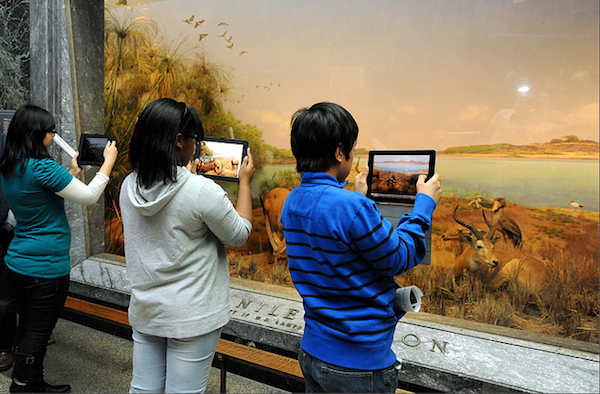Don't make your museums a boring experience: 5 ways to make them fun for young people

Imagine the scene. London, 2003. The Royal Academy exhibits a sample of Aztec art, and writer Dea Birkett goes to see her with her family. Among the members of the entourage, three children; Two of them, two-year-old twins. The family stops before one of the sculptures: it is the figure of an Eagle Man, an Aztec warrior. River, one of the twins, watches the statue and shouts, "Monster!" Dea is proud to see that her son has reacted to the work of art. For the security guard of the room, however, the reaction of the child is cause for scandal. So ask the family to leave the museum.
As the security guard of this story, there are many who believe that museums are not a place for children. They say that children tend to make a fuss, run from side to side and touch what they should not, something intolerable in a museum. In his opinion, these centers are practically sacred places, and the presence of children in their rooms only ruins the experience for adults. After all, how can a creature appreciate art?
Cozy
The center has to be a comfortable and safe place for children and families. It is not only about adapting the facilities to this type of public, including spaces where families can meet and talk, but also show a warm attitude: all the center staff must be part of the family experience. Feeling welcome, visitors can relax and enjoy. In addition to displaying its collections, the museum must tell its story. And, for families to feel involved, it is also important to listen to what they have to say. If visitors are comfortable in the center, if they feel they belong, they will have reason to return.
Positive
No more prohibiting children from touching or demanding silence. The rules at the entrance of the museum should explain everything that the little ones can do, not what is banned from them. You have to teach them, yes, to show respect for objects. Whenever possible, exhibitions should invite children to play to experience their own learning process. If they are loud, you have to analyze why they are: if they are excited, you can take advantage of that predisposition; if they are bored, it should be solved by offering activities that arouse their interest.
Inclusive
The museum must be aware that families with very different characteristics visit it: you have to know them, find out their needs and adapt to them with flexibility. Both the facilities and the activities or the price of the tickets must include all the options. You can offer stimulating experiences for babies, for example, or invite teens to get involved or give feedback. And, of course, the center must ensure that all its offer is equally accessible to visitors with and without disabilities.
Commitment to the future
Fortunately, more and more museums renounce this condition as a sacred precinct and decide to treat families with children as allies, not as enemies. In recent decades, "many museums have actively sought the acceptance of diverse audiences, focusing on inclusion, learning and community," according to the American Alliance of Museums. “Younger children have emerged as a key audience, a movement accentuated by recent research on the importance of learning and brain development in early childhood. Currently, there is a growing conversation about how museums can serve young students. ”
If you want to know the potential of a digital implementation in your museum, call us! MuHu staff will be delighted to help you to build together an interesting solution!

Leave a comment